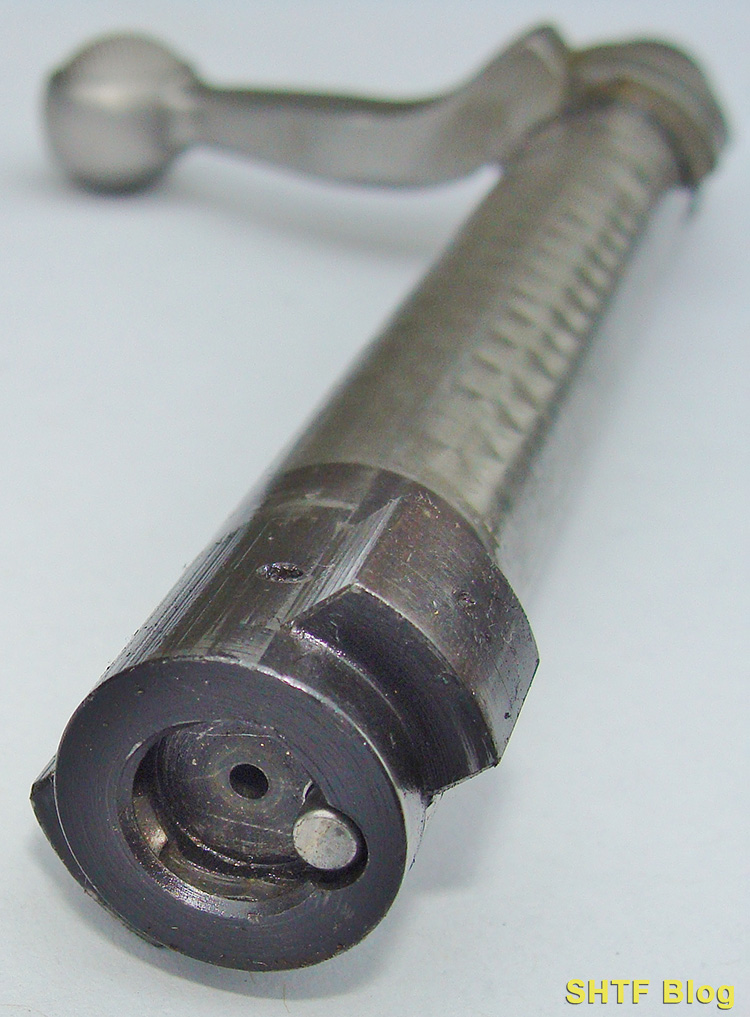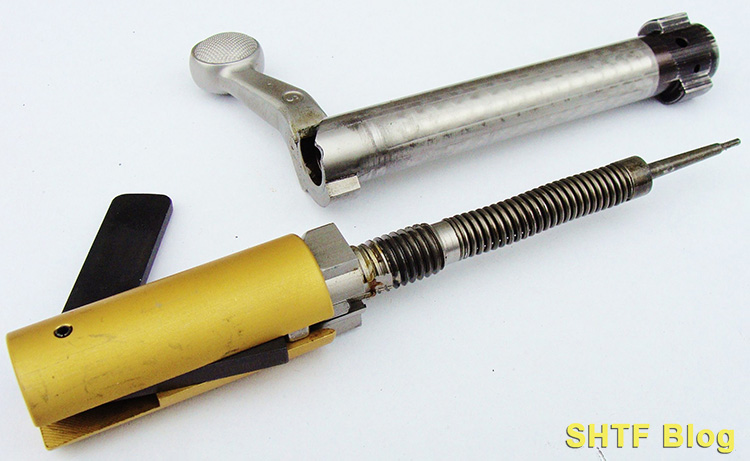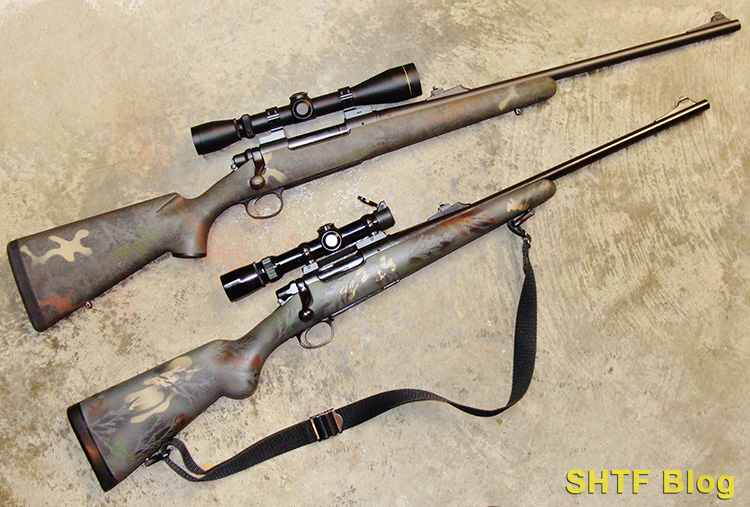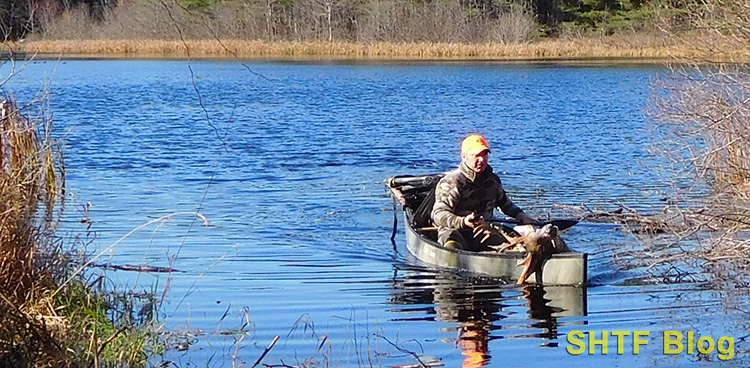You could spend more and, maybe, wind up with less.

The Remington Model 700 .30-06 is a best-selling rifle used by many hunters over the years. But does that mean it’s a worthwhile rifle? We’re going to dig into this rifle’s long legacy for all of you existing Remington 700 owners and aspiring owners.
Hunting Whitetail Deer Over Long Distances
One of my sons is a successful deer hunter, and like others who consistently shoot good bucks, he has a set of proven strategies. A favorite involves remote swale swamps that serve as hidey holes for educated bucks. Although near-perfect refuges from orange-clad threats, this whitetail safe zone has a weakness; our swamps are surrounded by trees that offer ideal vantage points for elevated stands.
Get up in the air fifteen feet and the view changes dramatically for the better. The wrinkle – some of these places are large enough to raise concerns about range. One especially promising spot that fit this category to a tee prompted online research for flat-shooting rifles. Among those that popped up, many were newer 6.5-calibers in 6.5 Creedmore to .260 Nosler.
Others were recent fast-stepping .30s that offered serious deer-anchoring potential. The negative was the steep expense of a new rifle, along with pricey ammunition and a suitable scope.
Which begged a simple question: Was such an upgrade even necessary? To help make this call we logged on to Google Earth, zeroed in on the swamp, and centered the program’s distance-scale on the tree line. Extending it to the swamp’s farthest side, the range was 350 yards; a fairly good poke but well within the capabilities of many classic hunting calibers.
And, since deer tend to bed near the middle of swamps, the actual shooting distance would probably be less. Two exploratory missions helped sort things out. The first involved a hike with a rangefinder. The second consisted of a peek inside a gun safe.

Low and behold, tucked almost out of sight, a Remington Model 700 BDL materialized. Better yet, it was chambered for the venerable .30/06 Springfield. I’d given this Model 700 to my son in1990, shortly before his thirteenth birthday. An ‘06 would be a bit much for many kids of that age, but this caliber came with a solution (more on that later).
Produced during a period when Remington was cranking out all sorts of bolt-action variations, it sported a heavy but ergonomically excellent synthetic stock in a traditional camo pattern. Although the rifle was heavy, its extra mass helped soak up recoil – especially with mild handloads. My son took his first deer with this ‘06, a pretty respectable buck.
Many more followed leading to increasing experience and, eventually, several lighter rifles in other calibers. By that point in time, across the land, some of the shine had worn off the venerable ’06. But Remington’s Model 700s still prospered.
Why Own a Remington Model 700?
For me, buying a Remington Model 700 boils down to cost versus features and performance. At one point I owned a collection of higher-end European rifles with pretty walnut stocks and blued-steel actions. But, given our miserable fall hunting conditions, some type of weatherproof rifle was in my future.
After Remington introduced stainless/synthetic Model 700s, I took the plunge and snapped up a .30/06. Although only half the cost of my fancier offshore ’06, the Remington was just as accurate. It was also a whole lot easier to scope.
Today, none of the former European rifles remain, all replaced by Remington Model 700s or their compact Model Seven offspring. Regrets? A few, but from a practical perspective it turned out to be the right decision.
And as a benefit, although perhaps not a deal cincher for everyone, thanks to the popularity of Remington’s design, parts and all sorts of neat accessories were and still are readily available.
Model 700 Geneology

Introduced back in 1962 as an evolution of the Model 721, the Model 700 was an instant hit. Designed to compete with Winchester’s famous Model 70, the new Remington took advantage of simplified manufacturing. Instead of using a receiver machined with an integral recoil lug, Remington’s solution was a thick plate, captured between its simpler tubular receiver and the barrel.
Like the Model 70, the Model 700’s trigger was adjustable; however, Remington went with a “cassette” design – easily upgraded by the purchaser. The bolt was a simple push-feed type that lacked a sturdy Mauser-type extractor claw. Instead, its enclosed bolt-face contained a springy C-clip extractor – less reassuring but still functional. Another departure from Mauser-based designs; the ejector was a spring-loaded plunger in the face of the bolt (similar to the AR system).
This design allowed an enclosed bolt face that resulted in a very strong action. Eschewing a traditional bolt-release lever, Remington opted for a somewhat fiddly tab, tucked just ahead of the trigger. The safety was also simplified to a rocker-lever design; on “safe” when moved to its rearward position.

Although less refined, the lower cost of a M-700 didn’t compromise its performance – at least, not in the eyes of most new customers. In fact, word soon spread that the Remington was an accurate rifle, so much so that it soon saw use among military and law enforcement snipers. The list of calibers grew steadily but, of course, the .30/06 was there from the beginning.
Model 700 Evolution
Although synthetic stocks are now the norm, early Model 700s were equipped with wood stocks in styles of the ’60s and ‘70s. Options have since increased, but for the most part, Model 700s are based on two types: ADL and BDL. There is a CDL (Classic Deluxe) version, but there is less demand for these versions.
ADL – Average Deluxe
This lower-cost version usually has a plainer stock and lacks a hinged floorplate. Unloading live rounds from its blind magazine requires manipulation of the bolt, but it’s a simple and fail-safe design that also saves some weight.
BDL – Better Deluxe
The “better” deluxe version uses the same action but incorporates a hinged floorplate. The contents of the magazine can be released into a palm by depression of a button in the trigger guard. This simplifies unloading but adds a couple ounces. For what it’s worth, I’ve never had any of my BDLs dump rounds by accident.
Of interest to some, the no-longer produced DBM used a detachable box magazine. Those interested in such a design can convert their BDLs via aftermarket designs.
Short and Long-Action Options
A smart move on Remington’s part was the creation of two receiver lengths.
The “long-action” M-700 is a perfect match for a number of traditional cartridges – including the .30/06 Springfield. The “short-action” is a great host for a growing list of shorter cartridges such as the .308 Winchester, .243 Winchester, etc.
Winchester finally followed suite by shortening the Model 70, but Remington was thinking even smaller…
The Shorter Model Seven
During the 1980s, light compact rifles really caught on. Borrowing on a previous compact Model 600 rifle design, Remington shortened the M-700’s action a bit more to create the Model Seven, a handy carbine compatible with the above short cartridges. These options provided a more compact rifle, too short for the ’06. However, a long-action .30/06 should be manageable for most folks.

Common Features
The safety of early M-700s locked the bolt when on “safe.” This prevented upward movement of the bolt handle upon contact with brush, etc., resulting in a failure to fire. The design also required moving the safety to “fire” before the chamber could be unloaded. Concerns about unintentional discharges caused Remington to alter the design.
Although the clearance process is now safer, plenty of game animals have lived to see another day. All of the M-700s (and M-7s) in my possession are the later type. So far I’ve avoided this problem through an ingrained habit of bolt checks.
Foul Weather ’06s
As firearm tastes changed, the Model 700 line kept pace via synthetic stocks and stainless steel. Some matte-blued versions chambered for the .30/06 had 22-inch barrels with iron sights. Most stainless models were 24-inch BDL versions without them.
The stainless/synthetic models are welcome additions for those of us who hunt in bad weather. They still require maintenance though, since stainless can rust if neglected.
Trigger Notes
Much later in its life, Remington changed the trigger to an “easily adjustable” X-Mark Pro design. Most M-700 afficionados (including me) hate ‘em. The adjustment screw, accessible from inside the trigger guard, is apparently cosmetic. This “improvement” is possibly a concession to lawyers, driven by flak over some unexplained (AKA accidental) discharges.
Between me and the three others in my hunting circle, we own a substantial number of Model 700s, many of which have seen decades of problem-free use. A few recent acquisitions are X-Mark Pros which, rumors to the contrary, can still be tuned.
The original design is more amenable to this process though (upon removal of the stock); or, for either design, track down an aftermarket trigger assembly.
Gone But Risen from the Ashes
Perhaps as a result of the negative publicity, Remington went bankrupt in 2020; a true disaster for Big Green afficionados. Fortunately, the brand has since remerged from the ashes, and the Model 700 has returned.
Meanwhile, with over five million produced, there are plenty of serviceable used rifles, many of which are chambered for the .30/06 Springfield. Fortunately, the oft-copied rifle and this caliber were just too good to fade away.
Desirable Genes
High production numbers often translate to abundant parts and accessories. As noted, the Model 700 qualifies here in a big way. Much of this is driven by the inherent accuracy of the design, which serves as a top choice for custom gunsmiths.
Those of us who like to tinker on their own can reap some of the same benefits thanks to numerous aftermarket stocks, triggers – and a whole bunch of other intriguing other items.
One trait I appreciate pertains to optics. Plain and simple, whether a long or short-action version, the M-700 is a scope-friendly design. Thanks to the vast assortment of bases and rings, just about any scope can be mounted to a long-action Remington – something I can’t say for all other makes. Many good mounting options are also downright affordable.
As for custom touches, although nice, most of us will get by just fine after purchasing a suitable scope and sling (easily attached to the QD studs of a factory M-700). This saves money for ammunition which, in the case of the ’06, is among the most common calibers.
Why the .30-06?

I’m guessing most shooters are at least somewhat familiar with the .30-06 Springfield cartridge. It’s so named because it appeared (in its present form) during 1906 for use in the U.S. Model 1903 Springfield Rifle. The ’06 was a great cartridge then, and it still is today; good enough that it’s still a benchmark for the assessment of other .30-calibers.
Its velocity may not match all newcomers, but it still comes close to many. And, thanks to a more than a century of distribution across the globe, odds of locating ammo will be a whole lot better.
How About The .308 Winchester, another great all-around choice? The .308’s reputation for good accuracy is justified but the .30-06 is no slouch in that regard, and it can generate higher velocities with a greater range of bullet weights.
When rifled with the standard 1:10 twist used by Remington, it’ll produce surprisingly good accuracy with everything from screaming-fast 110-grain varmint blasters to 220-grain moose thumpers.

Suitable Bullets
Today’s .30-caliber “premium” bullets make things even better, although many old-school loads can still have a place. The four members of my deer circle have piled up dozens of deer using plain ‘ol 150-grain Remington Core-Lokt pointed soft-points. Same story using 150-grain Hornady InterLock Spire-Point handloads – also available as factory-loaded American Whitetail ammunition. We’ve never lost a deer with either bullet.
Premium bullets are often better choices for larger and tougher game animals. Among the many great picks, two we’ve used with excellent results are the Nosler Partition and Barnes solid-copper TS-X. The practical heavyweight threshold for an ’06 is around 200 grains.
But, because the copper Barnes are tough enough to penetrate like heavier lead bullets, it’s possible to drop down a weight level. A 180-grain TSX (or Hornady GMX) can produce similar terminal effects with less recoil and a flatter trajectory.
Trajectory
Today’s long-range competitors will take every edge that can get to include the flattest-shooting calibers. But, most of us still stay inside a quarter-mile where many classic cartridges can do the job. Hits are much more likely nowadays thanks to accurate rangefinders and scopes with range-compensating features.
A chronograph is the best way to determine the necessary velocity of a load, but, we can come pretty close using published data. Don’t take it for the gospel though; shoot to confirm!

As a representative ‘06 example, Hornady lists the muzzle velocity of their 150-grain American Whitetail load as 2,910 feet-per-second. If zeroed for 200 yards, the 300 yard drop is about 8 inches, and at 400 yards it’s 23.5-inches – darned close to what I see on steel silhouettes.
Want more velocity and punch? Check out Hornady’s Superformance loads. Their latest 165-grain version clocks 3,080 fps and shoots even flatter; 6 ½” low at 300 yards, down 19” at 400 yards. These figures are based on a 24-inch barrel. However, unlike the .300 Winchester Magnum, a 22-inch ‘06 won’t sacrifice much speed – although it will generate less recoil.
Despite this, the .30-06 will never be a .300 Winchester Magnum – the better choice for heavy bullets and/or long-range shooting. But, thanks to advancements in propellants and bullets, the ’06 can come close – with some loads. Muzzle velocity of Federal’s popular 165-grain .300 Win Mag Fusion load is advertised as 3,080 fps (sound familiar?).
Using the above 200-yard zero, drop at 300 and 400 yards is 6.3/18.3-inches – about as near to Hornady’s .30/06 Superformance load as you could get. Partly for this reason I finally sold my M-700 .300 Win Mag. The more practical alternative was less expensive ’06 ammunition that also generated less recoil.
Recoil
Most average-size adults can manage a .30-06, but if kick is an issue. Hornady’s 125-grain 2700 fps Custom Lite still shoots flat with substantially less wallop.
Hopefully, Remington will once again offer their .30-06 Managed Recoil load, another great alternative. I used a similar fix to start my young son with soft shooting handloads. They did the job for a couple years and allowed him to grow into his rifle.

Accuracy
Some people knock the ’06. Even if true (doubtful), how much accuracy do we need? Three of the above four hunters in my group use .30/06 Remington Model 700s. Two are factory original. The other saw some customization but still has its factory barrel. All will deliver three-shot groups of around one-moa (1” at 100 yards) with basic factory loads.
The customized M-700, an American Wilderness version, will shoot three factory-loaded Federal 165 Barnes solid-copper TSX bullets into half-moa clusters!
Ammo Cost and Availability
Ammo of any sort is scarce and, when we can find it, prices are a whole lot higher. Still, some major brand .30/06 hunting loads are listed at (relatively) reasonable prices.
Thanks to dozens of useful ’06 load options, odds of finding something are also high. The well-established .300 Winchester Magnum (or its short-action .300 WSM cousin, and others) is a lot more expensive with fewer options.
Bulk ammo sites will sometimes runs specials, but specials are harder to find on smaller boxes of specialty ammo.
Reality Check
Truth be known, a short-action .308 would cover many situations. But the grand old ’06 does inspire another level of confidence. As for my son, well, he already owned a reliable rangefinder. And, as it turned out, his trusty ’06 had received a scope upgrade a few years earlier.
Because it’s new Leupold 2 ½-10X featured a range-compensating reticle, any concerns over distance were rendered moot. No cost either, thanks to an ample stash of 150-grain Hornady InterLocks. The proof was the buck in his canoe.

Matter of fact, if you can stand the extra half-inch of receiver length (and a couple more ounces), a long-action Model 700 chambered for the .30-06 will cover just about any hunting in the lower forty-eight. Actually, some other .308s are built off the same long-action receiver to streamline manufacturing.
My most recent Model 700 .30-06, a laminated/stainless BDL, continues to take its share of deer -although it was bequeathed to my oldest son. Nowadays, I bridge the ‘06 with a couple short-action Model Sevens in .308 and .300 Short Action Ultra Mag (similar to the .300 WSM). Good thing I have lots of brass because the SAUM is already semi-obsolete. Odds of finding ammo on a store shelf are near zero.
If I could only have one big game rifle? Rest assured it would be a Model 700, a stainless/synthetic version chambered for the .30-06 Springfield. Regardless of the rifle’s marque, those who fret over ammo – in the USA or elsewhere – could do a whole lot worse than choose an “ought-six.”
Want to read more from Steve Markwith on centerfire rifles? Check out his book on the subject.
- Markwith, Steve (Author)
- English (Publication Language)
- 264 Pages - 12/03/2016 (Publication Date) - Prepper Press (Publisher)


3 comments
Excellent article Steve ! I also have a couple of 30/06 Mdl. 700’s. My next rifle will be a Mdl. 700 in 6.5 Creedmore. My sons get excellent accuracy from this cartridge. The Mdl 700 is my favorite rifle as I’ve never had any problems whether hunting or target shooting. Thanks for the excellent article.
I have a new remington SPS in 30-06, when sighting this rifle in the trigger assembly is horrid, it sticks and feels gritty, the rifle fell out of the tree stand on the first day and it completleyn broke the bolt handle off the bolt, this rifle is not very good quality at all when it gets a differn’t trigger and gets a new bolt body it is going to be traded in for a quality rifle that hopefully will be more accurate…. will never own another Remington EVER!!!!
maybe mr. buck shouldnt be in a tree, if he drops his gun .
you fault it broke !